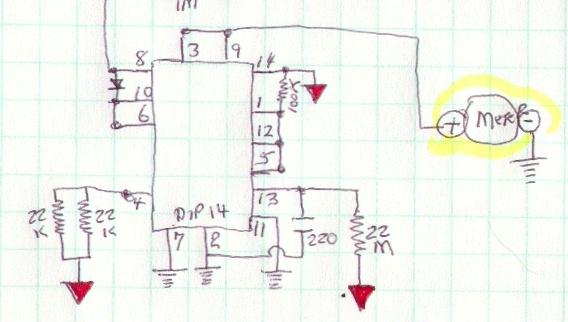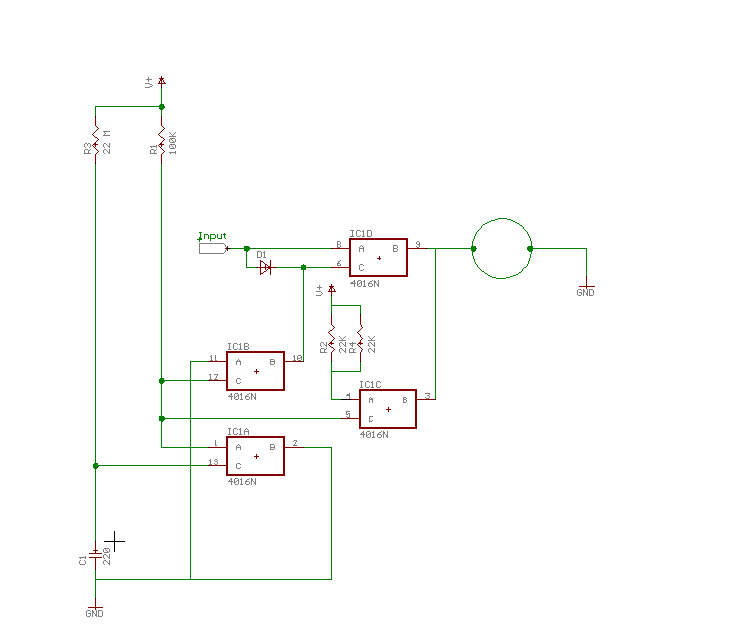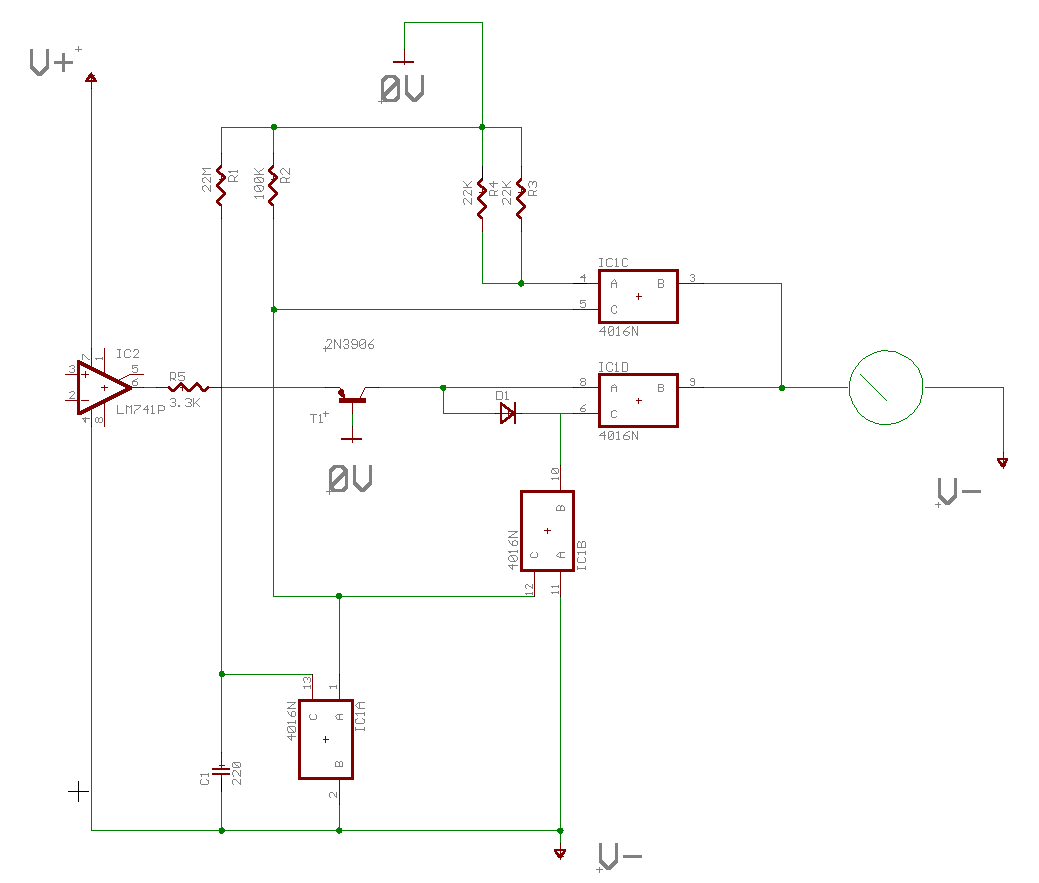
This IC takes the received/amplified signal as an input on pin #8.
It drives the meter in step with the increased audio in the XL 500 pulse detector.
Would like to identify this IC. It dates from 1984.
The red triangles are the positive battery (+8.4v) and the ground is the neg battery terminal.



 Pin 4 of the 741 goes to the -5V rail developed by a 79L05 regulator off the -9V. V+ on pin 7 is +5V of course.
Pin 4 of the 741 goes to the -5V rail developed by a 79L05 regulator off the -9V. V+ on pin 7 is +5V of course.
Comment